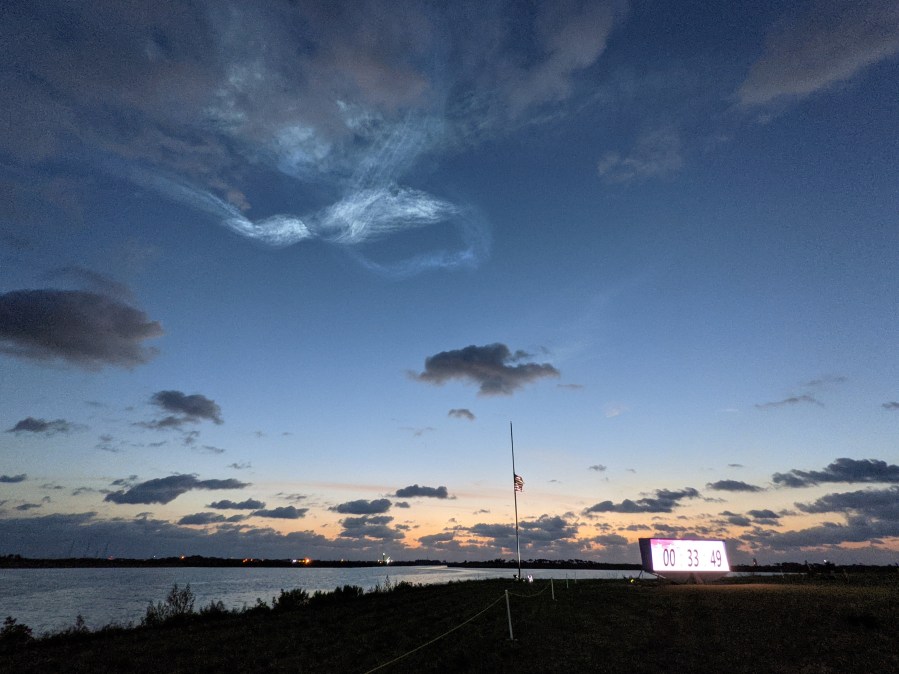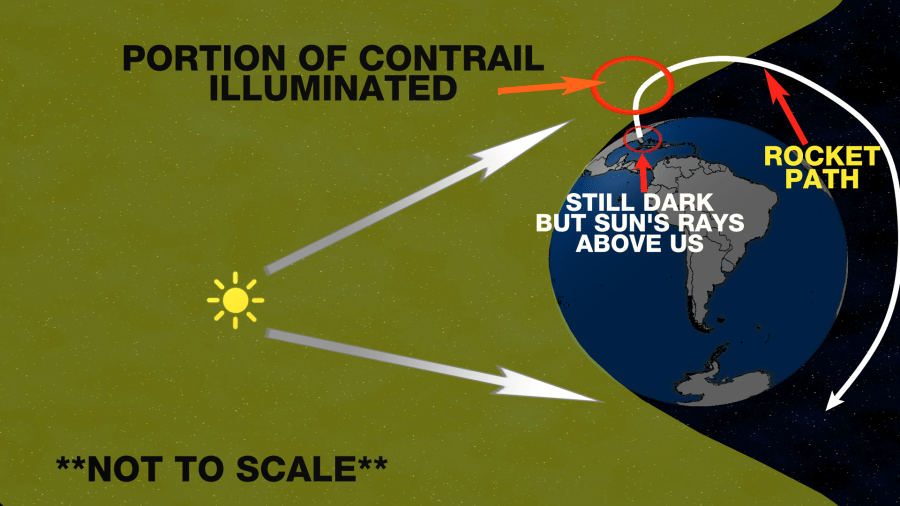TAMPA, Fla. (WFLA) — Set your alarms early on Friday! A planned SpaceX launch of another batch of satellites may produce a cool-looking phenomena known as a space jellyfish.
Thankfully there are no stings involved here though. A space jellyfish is, simply put, the sun’s rays illuminating the particles left in the air from the launch.
Not many launches produce the effect – several factors must line up perfectly for it to occur.
The first factor is the time of the launch. The best chances to see this is when the launch occurs just before or at dawn. The rays of sunlight are traveling at a more horizontal angle than any other time of the day and can illuminate the particles left behind from the launch in a very unique manner. Friday’s launch is scheduled for 5:47 a.m. Sunrise is 6:44a.m. but the rays of light may reach the particles high up in the atmosphere well before the rays of the sun break the horizon at sunrise.
“While the sun is not above the horizon yet, the rays are,” Meteorologist Amanda Holly explained when we saw the phenomena last year. “The sun’s rays are just peaking around the curvature of the earth (for us) and illuminating the ice crystals. As the light passes through the ice, it bends and we see different colors.”
She noted that the space jellyfish “lingered through the ‘astronomical twilight’ hours.” According to timeanddate.com, that’s when the sun is 12 to 18 degrees below the horizon.

“During the twilight hours, the sun’s rays illuminated the elevated remnants of the contrail high up in the atmosphere,” Holly explained. “The bright clouds many saw illuminated are called noctilucent clouds. They are brighter than the surrounding clouds because they are significantly higher than the rest, hundreds of thousands of feet up. At this height in the atmosphere, the contrail is made up of tiny ice crystals.”

To visualize how those clouds are illuminated, she explained you can take a flashlight and point it at a tennis ball from a few feet away.
“From our perspective, we would be sitting near the top of the ball but the light isn’t reaching the surface yet,” Holly said. “However, the rays are lighting up the area above us and if you put an object up there, you’ll see it light up, much like the clouds are here.”







